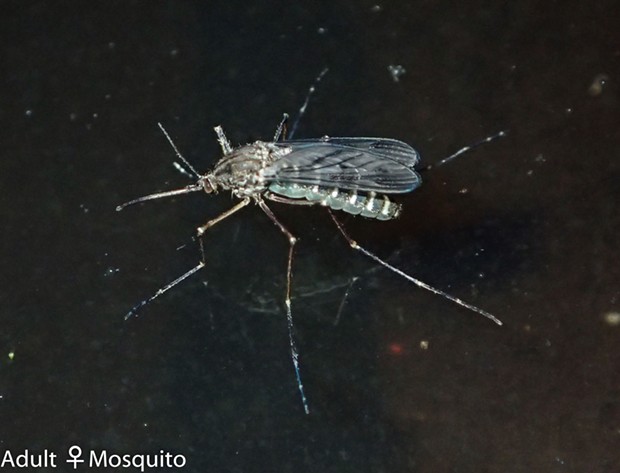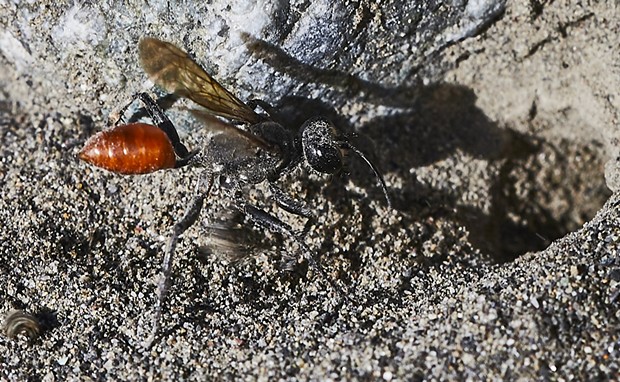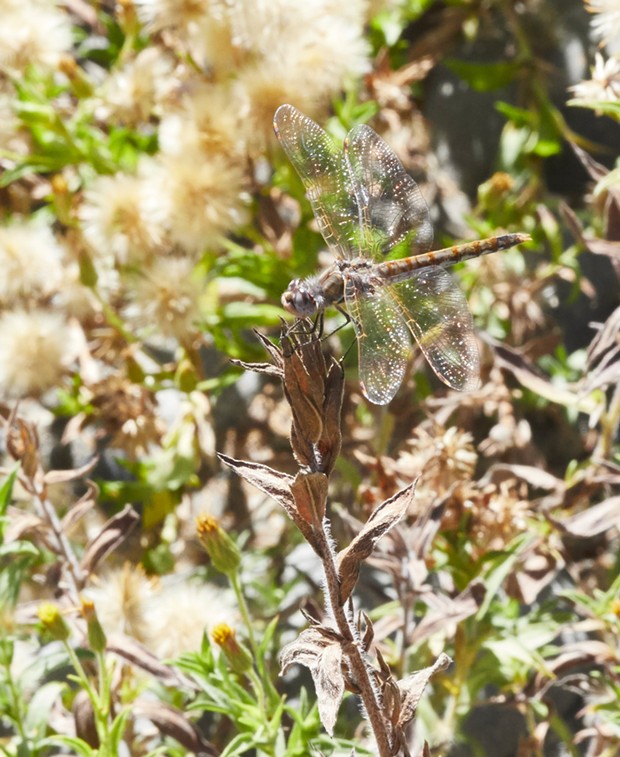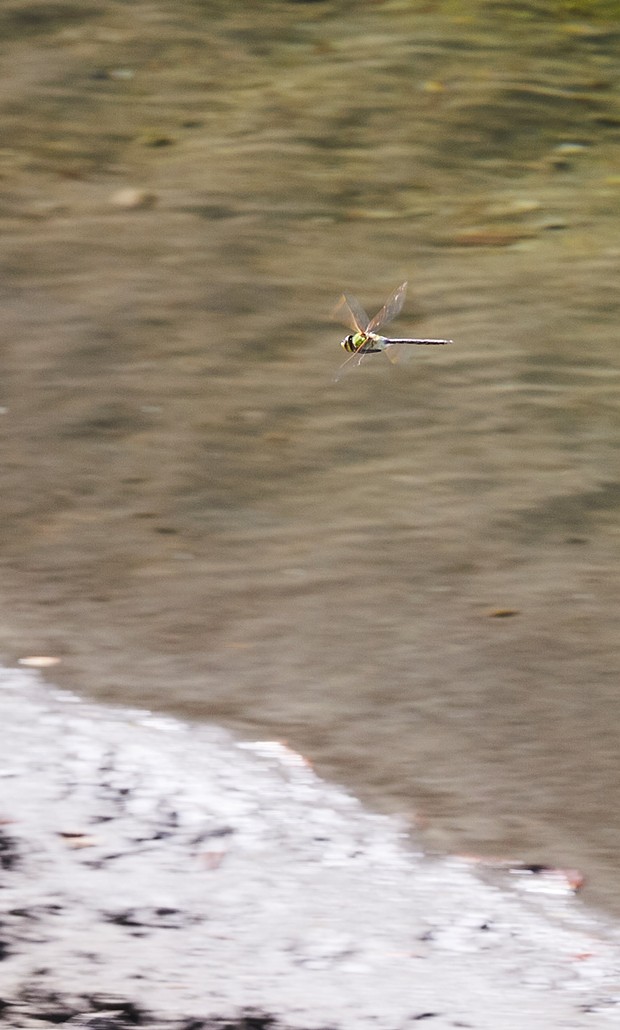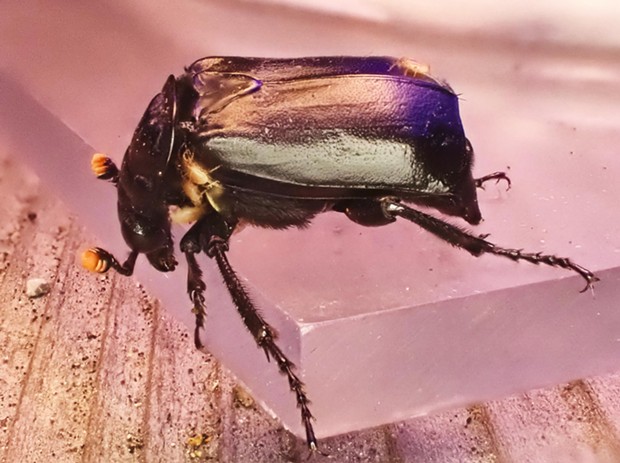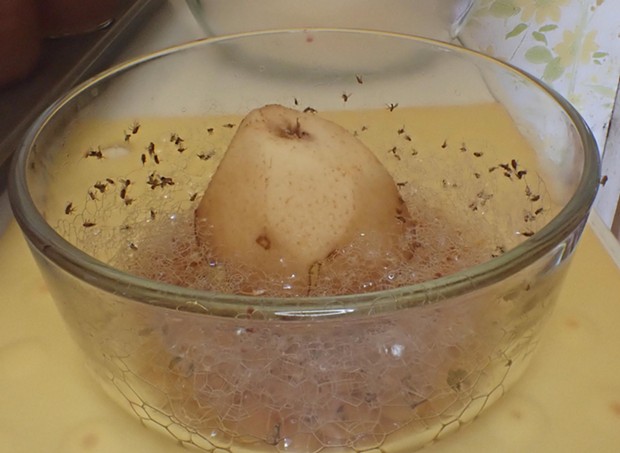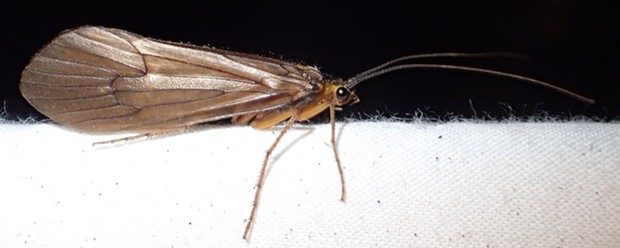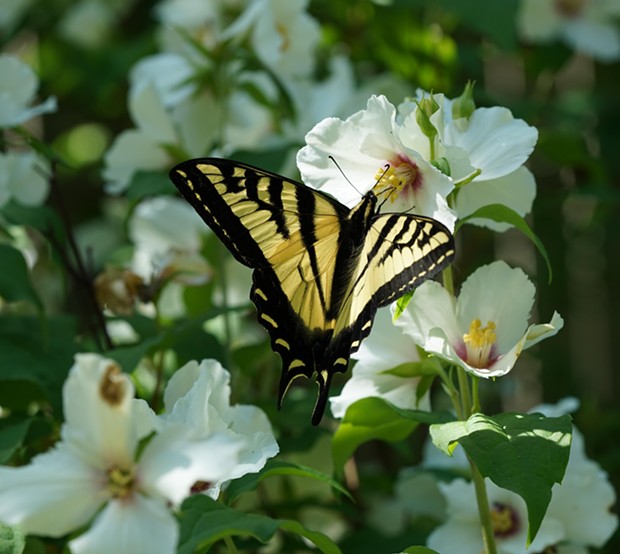Sunday, September 29, 2019
HumBug: Friends and Enemies
Posted By Anthony Westkamper on Sun, Sep 29, 2019 at 11:22 AM
This week I started to write about spiders and ended up buying a book on mosquitoes. In the recently published book The Mosquito: A Human History of Our Deadliest Predator, author Timothy Winegard calculates nearly half the people who ever lived died of mosquito bites.
To put things into a modern perspective, mosquitoes kill on average 750,000 people per year, mainly in tropical countries. Some estimates range as high as 1 million.
To put things into a modern perspective, mosquitoes kill on average 750,000 people per year, mainly in tropical countries. Some estimates range as high as 1 million.
Sunday, September 22, 2019
HumBug: An Autumnal Walk
Posted By Anthony Westkamper on Sun, Sep 22, 2019 at 11:03 AM
Walking along the Van Duzen River, we spotted a medium sized black and orange wasp industriously digging a hole in the sand. Although similar in many ways, she was smaller and had a slightly different color pattern than the locally common great golden sand digger. I posted my photo and ID request on www.Bugguide.net and shortly got a reply. This wasp was from the related genus Prionyx, another hunter of grasshoppers.
I spotted several species of butterfly including a California tortoiseshell a variety that in some years have had tremendous population explosions. The reasons for this are not well understood. This hasn't been one of those years as this is the only individual I've seen lately.
I spotted several species of butterfly including a California tortoiseshell a variety that in some years have had tremendous population explosions. The reasons for this are not well understood. This hasn't been one of those years as this is the only individual I've seen lately.
Sunday, September 15, 2019
HumBug: Missing Dragonflies
Posted By Anthony Westkamper on Sun, Sep 15, 2019 at 11:17 AM
This summer I have been bemoaning the lack of dragonflies along my stretch of Van Duzen River. The number of species is low as is the number of individuals of the few species I've seen. They just haven't been there. My guess is that they, in their incarnation as aquatic larvae, and their prey have been exposed to agricultural runoff that can contain insecticides, herbicides and other pollutants. I do not have the resources to prove or disprove this, so it is just a very unscientific guess. There are many other possibilities, such as the amount of rainfall we had last winter.
I have seen no gray sanddragons, palefaced clubskimmers, flame skimmers, common whitetails, or bison snaketails, all of which have been common residents hereabouts.
Yesterday the air over the Van Duzen was filled with dozens of dragonflies, patrolling and snatching bugs out of the air. There were two species represented. A few variegated meadowhawks (Sympetrum corruptum) and the greatest number of common green darners (Anax junius) I have ever seen. The former is a small perching species and the latter is a large patrolling one. What they have in common is they are both migratory species, passing through from somewhere else to somewhere else. They didn't have to grow up in our river. The number of green darners may be due to a lack of competition from the locals.
On a much more cheerful note, today, Facebook reminded me two years ago I reported a black burying beetle at my light trap. These beetles (genus Nicrophorus) are unusual in the insect world that both sexes provide for and tend the young as they develop. One visited me again last night. Like the previous one, this specimen was carrying a host of phoretic mites. They're not parasitic on the beetle but hitchhikers from the last and on to the next small dead animal.
Home maker's tip from your bug guy ... Several overripe pears managed to attract a host of fruit flies into my house. They appeared like magic and got to be annoying, so I set my best trap for them. A bowl with a piece of overripe fruit in the center surrounded by a thick layer of soap suds. They try to land on the bubbles and get trapped. The soap interferes with the water balance in their tiny bodies and they die quickly. I replenish the suds every few hours as they dissipate. Works every time.
I have seen no gray sanddragons, palefaced clubskimmers, flame skimmers, common whitetails, or bison snaketails, all of which have been common residents hereabouts.
Yesterday the air over the Van Duzen was filled with dozens of dragonflies, patrolling and snatching bugs out of the air. There were two species represented. A few variegated meadowhawks (Sympetrum corruptum) and the greatest number of common green darners (Anax junius) I have ever seen. The former is a small perching species and the latter is a large patrolling one. What they have in common is they are both migratory species, passing through from somewhere else to somewhere else. They didn't have to grow up in our river. The number of green darners may be due to a lack of competition from the locals.
On a much more cheerful note, today, Facebook reminded me two years ago I reported a black burying beetle at my light trap. These beetles (genus Nicrophorus) are unusual in the insect world that both sexes provide for and tend the young as they develop. One visited me again last night. Like the previous one, this specimen was carrying a host of phoretic mites. They're not parasitic on the beetle but hitchhikers from the last and on to the next small dead animal.
Home maker's tip from your bug guy ... Several overripe pears managed to attract a host of fruit flies into my house. They appeared like magic and got to be annoying, so I set my best trap for them. A bowl with a piece of overripe fruit in the center surrounded by a thick layer of soap suds. They try to land on the bubbles and get trapped. The soap interferes with the water balance in their tiny bodies and they die quickly. I replenish the suds every few hours as they dissipate. Works every time.
Sunday, September 8, 2019
HumBug: Caddisflies and Fishing Flies
Posted By Anthony Westkamper on Sun, Sep 8, 2019 at 11:19 AM
When I was a boy, my dad introduced me to the joys and frustrations of trout fishing. In his opinion the best bait were what he called "periwinkles," little bugs that cover themselves with twigs or stones and crawl around in creeks. Skip forward to 1981 and Gary LaFontaine, a noted writer, published a book that was a revelation in the world of fly fishermen. It was named simply Caddisflies. It extolled the virtues of the insect order trichoptera (meaning "hairy wing") and its hitherto underappreciated role in the lives of our freshwater fish.
Until his groundbreaking work, the main group of insects imitated by fly tyers was the Mayflies (ephemeroptera) known for their brief lives and showy "hatches" when the air can be filled with millions of them.
Until his groundbreaking work, the main group of insects imitated by fly tyers was the Mayflies (ephemeroptera) known for their brief lives and showy "hatches" when the air can be filled with millions of them.
Sunday, September 1, 2019
HumBug: Butterflies vs. Moths
Posted By Anthony Westkamper on Sun, Sep 1, 2019 at 10:59 AM
One of the most common questions I get as a bug guy is, “What's the difference between butterflies and moths?” Although most consider them separate clades within the order lepidoptera, another answer is “maybe nothing.” Some authorities regard butterflies as a day flying sub group of moths.
Their lifestyles are very similar. Starting life as eggs usually deposited on the plant on which the young caterpillars will feed. They chew leaves and in some cases cause extensive damage to their host plant. As they grow, they shed their skin about five times before they into a resting phase (pupa) where they transform from the caterpillar to the final (usually winged) adult phase we think of. With some exceptions, they live as adults for only a few weeks.
Their lifestyles are very similar. Starting life as eggs usually deposited on the plant on which the young caterpillars will feed. They chew leaves and in some cases cause extensive damage to their host plant. As they grow, they shed their skin about five times before they into a resting phase (pupa) where they transform from the caterpillar to the final (usually winged) adult phase we think of. With some exceptions, they live as adults for only a few weeks.
